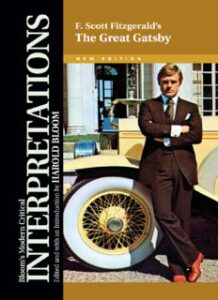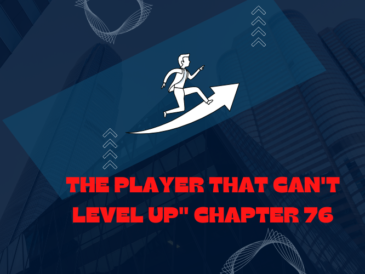About Author
“The Great Gatsby” is a novel written by American author F. Scott Fitzgerald and published in 1925. Set in the roaring twenties, the story is a commentary on the decadence and excess of the era, as well as a criticism of the moral decay and societal changes of the time. “The Great Gatsby
The novel follows the life and events of the wealthy Jay Gatsby and his pursuit of the love of his life, Daisy Buchanan. Through Gatsby’s relationships and interactions with other characters, the novel explores themes of love, wealth, and the American Dream. “The Great Gatsby” is considered a classic of American literature and is frequently studied in high school and college literature courses.
Introduction to Jay Gatsby and the Roaring Twenties:
“The Great Gatsby” by F. Scott Fitzgerald is a classic novel set in the 1920s, also known as the “Roaring Twenties.” The novel captures the essence of this era, characterized by its optimism, excess, and decadence. It tells the story of Jay Gatsby, a mysterious and wealthy man. “The Great Gatsby
Who throws extravagant parties in the hopes of winning back the love of his life, Daisy Buchanan. Through Gatsby’s experiences, the novel explores the themes of love, wealth, and the American Dream. In this chapter, we will provide an introduction to Jay Gatsby and the context of the Roaring Twenties, setting the stage for the events to come in the novel.
Gatsby’s Pursuit of Daisy Buchanan
At the center of “The Great Gatsby” is Jay Gatsby’s relentless pursuit of the love of his life, Daisy Buchanan. Despite the many obstacles and challenges he faces, Gatsby never gives up on winning back Daisy’s heart. This chapter will examine Gatsby’s feelings for Daisy and his efforts to win her over. “The Great Gatsby
Including his lavish parties and his attempts to ingratiate himself with her social circle. Through Gatsby’s pursuit of Daisy, the novel raises questions about the nature of love and the lengths people will go to in order to win it. This chapter will delve into these themes and examine the impact they have on the characters and events of the novel.
The Corruption of the American Dream
One of the central themes in “The Great Gatsby” is the corruption of the American Dream. The novel portrays the decadence and excess of the wealthy elite in the 1920s, and criticizes. The moral decay and societal changes of the time. Through the character of Jay Gatsby, the novel shows. How the pursuit of wealth and status can lead to the corruption of one’s values and the disillusionment of the American Dream.
This chapter will explore the theme of the American Dream in “The Great Gatsby,” examining how the characters embody it and how it is corrupted over the course of the novel. We will also consider the implications of this theme for the broader society and what it says about the American Dream in general.
Decadence of the Elite
The Roaring Twenties was an era of decadence and excess, and this is reflected. In the lives of the wealthy elite in “The Great Gatsby. ” The novel portrays the lavish parties, expensive cars, and opulent lifestyles of this group, and also critiques their moral decay and societal irresponsibility.
This chapter will examine the decadence of the elite, “The Great Gatsby,” looking at how it is portrayed in the novel and. What it says about the upper class of the time. We will consider the implications of this decadence for. The characters and the broader society, and what it reveals about. The values and priorities of the wealthy elite in the 1920s. “The Great Gatsby
The Tragedy of Gatsby’s Demise:
“The Great Gatsby” is a tragic novel, and the story of Jay Gatsby’s downfall is at the heart of this tragedy. Despite his wealth, status, and relentless pursuit of love, Gatsby is ultimately unable to find happiness or fulfillment. This chapter will examine the tragedy of Gatsby’s demise, exploring the events and circumstances that lead to his ultimate downfall. “The Great Gatsby
We will consider the ways in which Gatsby’s fate is a commentary on the themes of love, wealth. The American Dream, and what it says about the human condition. This chapter will also examine the impact of Gatsby’s tragedy on the other characters and the broader society. It reveals about the darker side of the Roaring Twenties.
The Symbolism of the Green Light
The green light is one of the most iconic symbols in “The Great Gatsby.” It represents Jay Gatsby’s longing for Daisy Buchanan and his pursuit of the American Dream. This chapter will examine the symbolism of the green light in the novel, looking at how it used to convey Gatsby’s feelings and the themes of the story.
We will consider the various interpretations of the green light. “The Great Gatsby It says about Gatsby, Daisy, and the American Dream. This chapter will also explore the role of symbols in “The Great Gatsby” more broadly, and what they reveal about the themes and characters of the novel.
The Failure of the Upper Class
“The Great Gatsby” is a critique of the wealthy elite of the Roaring Twenties, and the ways in which they have failed society. The novel portrays the decadence and moral decay of this. Therefore group, and suggests that their excesses and irresponsibility have contributed to the larger societal problems of the time.
This chapter will examine the failure of the upper class. “The Great Gatsby,” looking at how it is portrayed in the novel and what it says about the values and priorities of the wealthy elite. We will consider the implications of this failure for the characters and the broader society, and what it reveals about it. The state of the American Dream in the 1920s. This chapter will also explore the role of social criticism in “The Great Gatsby,” and what it says about the larger cultural and political landscape of the time.
The Role of Narrative Voice
The narrative voice in “The Great Gatsby” plays a significant role in shaping the reader’s understanding of the story and the characters. The novel told from the perspective of Nick Carraway, and this perspective colors the events and characters in important ways. This chapter will examine the role of the narrative voice.
“The Great Gatsby,” looking at how Nick’s point of view affects our understanding of the story and the characters. We will consider the advantages and limitations of Nick’s perspective, and what it reveals about his own character and motivations. This chapter will also explore the broader literary technique of narrative voice and its impact on the reader’s experience of the novel.
The Power of Illusion and Disillusionment
The themes of illusion and disillusionment are central to “The Great Gatsby.” The novel portrays the lives of characters who are chasing illusions. Whether it be the American Dream, love, or status, and the ways in which these illusions ultimately shattered.
This chapter will examine the power of illusion and disillusionment. “The Great Gatsby,” looking at how it is portray in the novel and what it says about the human experience. We will consider the various illusions that the characters are chasing, and. What happens when they confronted with the reality of their situation. However this chapter will also explore the broader theme of illusion. Disillusionment in literature, and what it reveals about the human condition.




